|
Fort Loudoun and Tellico Dams
|
|
Fort Loudoun and Tellico Dams are TVA Dams near Lenoir
City, Tennessee. Fort Loudoun is the most upstream dam on the Tennesee River,
and has the last (first?) navigation lock, making Fort Loudoun Lake the end (or
beginning) of the line for commercial barge traffic. Tellico is the last dam on
the Little Tennessee River, located right at the Tennessee River, and actually
diverts the Little Tennessee into Fort Loudoun Lake. As you cross Fort Loudoun
Dam headed east, you cross the channel that connects the two lakes.
|
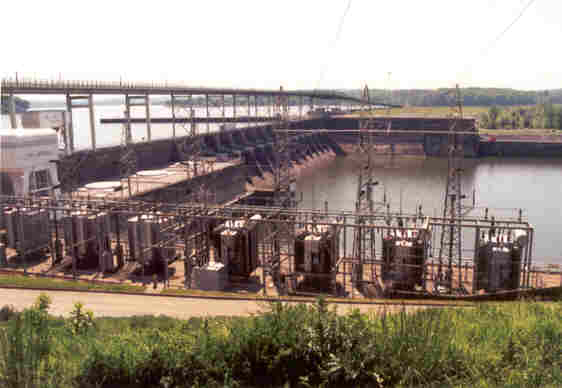
|
|
This is a view of the downstream side of the dam. The
powerhouse is just visible behind the switchyard, and the lock is visible on
the other side of the river. The Dam is 4,190 feet long and 125 feet high.
|
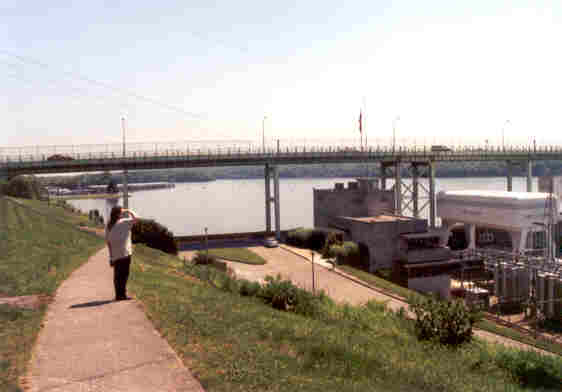
|
|
Here is Jan overlooking the office and powerhouse. The
requisite crane is visible (the large white structure) as are the wires going
to the switchyard behind Jan.
|
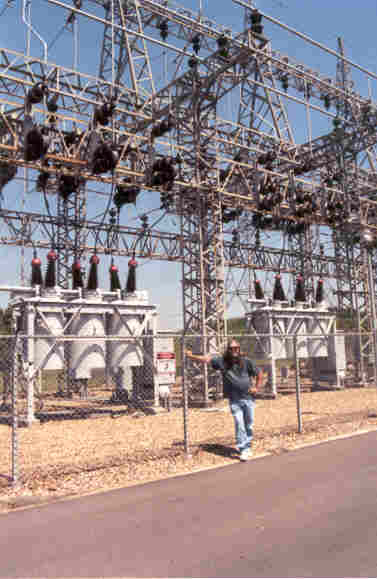
|
|
The Fort Loudoun Switchyard. This plant is capable of 123
Megawatts.
|

|
|
A small craft exiting the Fort Loudoun lock. The lock is
the original, small 60 x 360 feet, but the lift is a respectable 72 feet
between the normal pool levels.
|
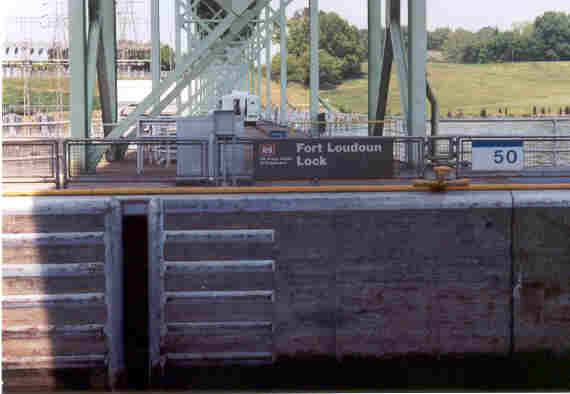
|
|
The "mule" at the Fort Loudoun lock, and the Army Corps
of Engineers sign identifying the lock: the Corps operates the locks at all TVA
dams. This is one of two locks in TVA's system that is not available for use 24
hours a day, being open from 6 AM to 10 PM. The other is at Melton Hill Dam on
the Clinch River, which is available "by appointment". Fort Loudoun is the most
upstream lock on the Tennessee River, so Fort Loudoun Lake is the terminus of
barge traffic on the river. The channel connecting Fort Loudoun and Tellico
Lakes can accomodate barge traffic however, so you may occasionally see a barge
on Tellico Lake.
|
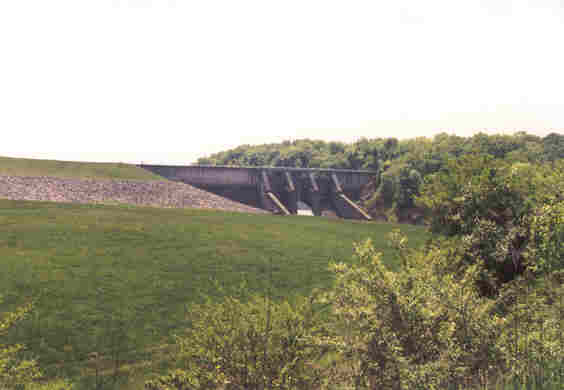
|
|
This is Tellico Dam. It is a long (3,238 feet, and 129
feet high) earthen and rock dam, with a concrete gated spillway at one end.
|

|
|
This is a closeup of the gated spillway. A little water
is allowed to flow, probably to keep the channel from here to the Tennessee
River from getting stagnant. There is no powerhouse, as most of the water is
diverted to Fort Loudoun Lake, and therefore through the Fort Loudoun
Powerhouse.
|
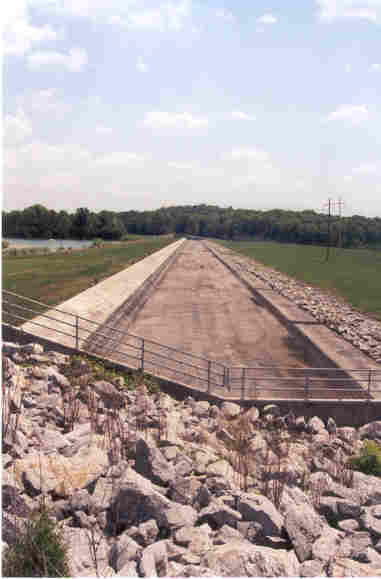
|
|
As we drove by the dam, we came upon this structure. We
decided it was an emergency spillway.
|















